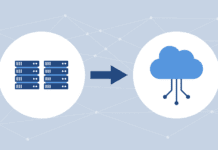Perception determines reality. Environmentalists may perceive wind and solar power are successfully knocking out fossil fuels and will prevail within a few years. Yet attend any oil and gas conference, and it becomes very clear that both are projected to show continual output expansion for the next several decades.
Perception then can become horribly distorted or just plain wrong. And so it is with tape. The common belief is that tape is fading away gradually. That held some truth until 2009, but the last couple of years have seen a major tape renaissance.
According to the research firm Enterprise Strategy Group, the use of tape now dominates archiving over internal disk, external disk or cloud. Further, tape’s lead is expected to grow during the next five years, demonstraing 45 percent compound annual growth by 2015.
“Deduplication made it look bleak for tape for a while, but the market began expanding again in 2009,” said Molly Rector, chief marketing officer for Spectra Logic.
She names growth areas such as archiving, regulatory compliance and disaster recovery. Google, for example, lost 0.9 percent of its mailboxes due to disk-based replication corruption. Those mailboxes were recovered from tape.
Migrating From Tape to Tape
The Media and Entertainment vertical has become another strong zone for tape as broadcasters and others migrate content from video tape to digital formats. Medcom, for example, is a media organization based in Panama. The company needed a great deal more storage when Sony announced the end of life of the Betacam video tape format, and management decided to introduce HD programming. It adopted a Spectra T950 tape library to back up and archive 370 TB of video files.
“Disk is expensive; it consumes a lot of high-priced power in Panama, and it takes up a lot of space,” said Tony Perez, Medcom’s senior manager of operations and projects. “We decided to move off video tape and onto LTO tape.”
Around 60 edit bays feed data into a production server and from there into the tape archive. As well as the Spectra Logic box, the company has three IBM LTO-4 drives with 450 slots holding over 300 TB of data. A Brocade Fibre Channel (FC) interface provides high IO for the archive.
National Geographic Global Media editorial group is another organization that is a fan of tape. It has established a digital archive to maximize square footage of its data center using a five-frame Spectra T950 with LTO-4 drives and more than 6,000 tape slots. This stores all of National Geographic’s high-resolution digital content as it is migrated from primary disk using SGI’s DMF software. The archive also stores a backup copy of low-resolution data on tape for long-term access. That amounts to up to 350,000 hours of HD video (8PB).
“The operational costs of video are flat compared to the rapidly rising costs of managing disk,” said Kyle Knack, Director of Infrastructure Systems at Nat Geo Global Media. “Tape is just not that expensive so this helped us decide to throw a lot more in to the archive.”
He likes the file system integrated approach to tape that comes as a logical extension of the overall Active Archive system. This makes it relatively easy to create tools for it and view all the content in one directory, whether on tape or disk.
The company is currently using both LTO-4 and LTO-5 tapes, but it is moving mainly to the latter. It keeps two sets of the data onsite in the tape system and ships another set of the data to Iron Mountain. However, Knack said that the plan is to set up an offsite DR facility hosting its tapes so it can recover faster.
“Our average costs for SATA per TB are around $2,500 and for higher-end NAS is $4,500, not counting power and cooling,” said Knack. “Our tape archiving has a five-year cost of $1.3M for 5 PB of data on LTO-4 around $264 per TB.”
The power equation, too, comes out heavily in favor of tape–600 Watts of power for the five racks of T-950 floor space compared to two large disk arrays that consume 15,000 Watts each.
Tape’s Future
How will tape fare in the future? Rector goes so far as to predict that it will fundamentally transform the data center of the future.
“Backup will become obsolete in the traditional sense,” she said. “Instead, a central file system will integrate disk and tape resources to management and offload media.”
She envisions a world where solid state disk (SSD) sits in the top tier, where SATA is used for local disk and the remaining 80 percent to 90 percent of data is on tape. Instead of full backups every week and then having to store 52 copies per year (that’s a lot of tapes to keep track of), the tape library will contain a couple of copies of all data.
Mike Kahn, an analyst with the Clipper Group, thinks that tape can grow even more if the word “tape” is eliminated from the discussion. Extending the concept of virtualization well beyond the hypervisor, he said that virtualized resources should mean that users pick and choose SLAs based on balancing the desired level of service against cost.
“In that model, they shouldn’t be concerned about whether their data is on tape or not,” said Kahn. “The focus should not be on the media or the system but on service level requirements. And for many, tape is a good answer.”
Drew Robb is a freelance writer specializing in technology and engineering. Currently living in California, he is originally from Scotland, where he received a degree in geology and geography from the University of Strathclyde. He is the author of Server Disk Management in a Windows Environment (CRC Press).





